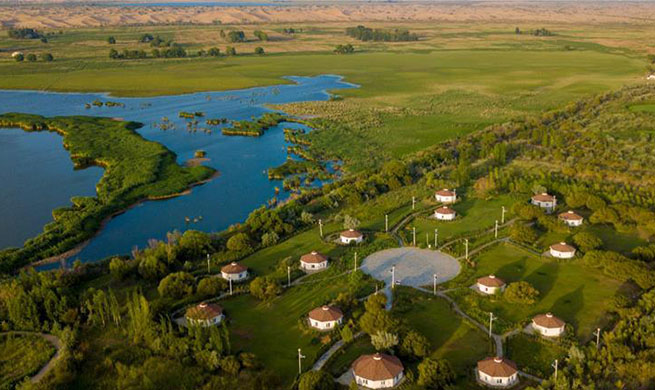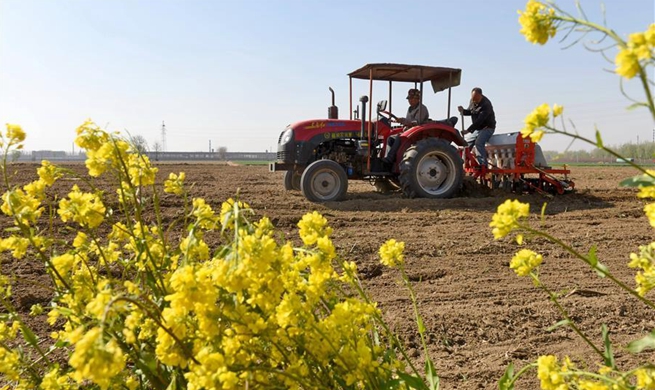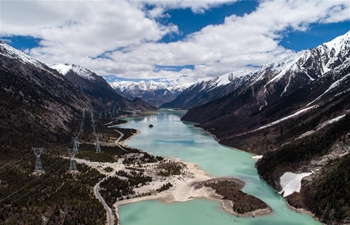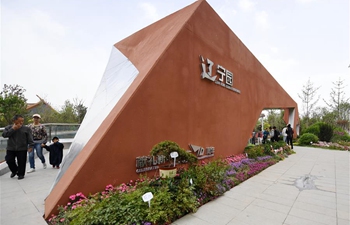YINCHUAN, May 20 (Xinhua) -- Huddling himself in a narrow space, Yang Long fills a hole on a run-down wall with bits of earth. It is not an ordinary wall, but the Great Wall in northwest China's Ningxia Hui Autonomous Region.
Leading a repair team, the 40-year-old man will spend around one year to restore an 800-meter-long section of the Great Wall that dates back to the Ming Dynasty (1368-1644).
Known as the largest and greatest fortification system in China's history, the Great Wall was built across the country during different dynasties to protect its territories and resist invasion from various nomadic groups.
However, very few people know that, aside from the famous Great Wall in Beijing, Ningxia is also home to many ruins of the Great Wall and is dubbed as the "museum of the Great Wall."
"Ningxia had long been at the junction of nomadic civilization and farming civilization in ancient times. In order to resist the invasion of nomadic peoples from the north, regimes of the Central Plains built up the Great Wall in Ningxia many times," said Zhou Xinghua, a famous Great Wall researcher and a former curator of the Ningxia Museum.
Research shows that there are 1,507 kilometers of the Great Wall in Ningxia, of which 506 kilometers remain. The remaining areas were mainly built in the Warring States Period (475 B.C.-221 B.C.), the Qin Dynasty (221 B.C.-206 B.C.), the Sui Dynasty (581-618) and the Ming Dynasty.
Different from the Beijing Great Wall, builders used rammed earth to build the wall. The Great Wall in Ningxia had been badly damaged due to impacts of climate and human activities over the past hundreds of years.
Fortunately, the region has stepped up efforts to repair and maintain the Great Wall relics in recent years.
To restore the ancient wall without changing its original state, Yang and his team conducted repeated experiments on the wall structure, materials and layers of the wall, and they finally found the best restoration method.
"We did 65 experiments in nine months and found the best formula of building materials and construction methods," said Yu Xia, a technician in charge of the Great Wall maintenance project.
"I really admire the wisdom of the ancient people," Yu said, adding that people in the past tamped down the earth many times and added gravel and needlegrass to reinforce the wall.
"The whole process was like communicating with the builders of the ancient Great Wall," Yu said.
To simulate the construction process of the ancient Great Wall to the maximum extent, large machinery, chemical products and additives are not allowed to be used during restoration. Yang and the workers can only use iron or wooden hammers to tamp earth, and they must fill the holes on the wall by hand.
Yang, who previously repaired ancient temples, said he felt pressure when restoring the wall as he first started. "I was utterly exhausted tamping earth day by day, again and again."
However, the restoration of beacon towers and forts is even more difficult. Workers need to make molds, tamp earth and maintain the structures. Filling a hole on a tower wall takes three people one day, and repairing the side of a tower takes 50 workers half a year.
"We found signs of restoration on the Great Wall in different periods, and we hope our efforts could also be discovered by future generations," Yu said.

















